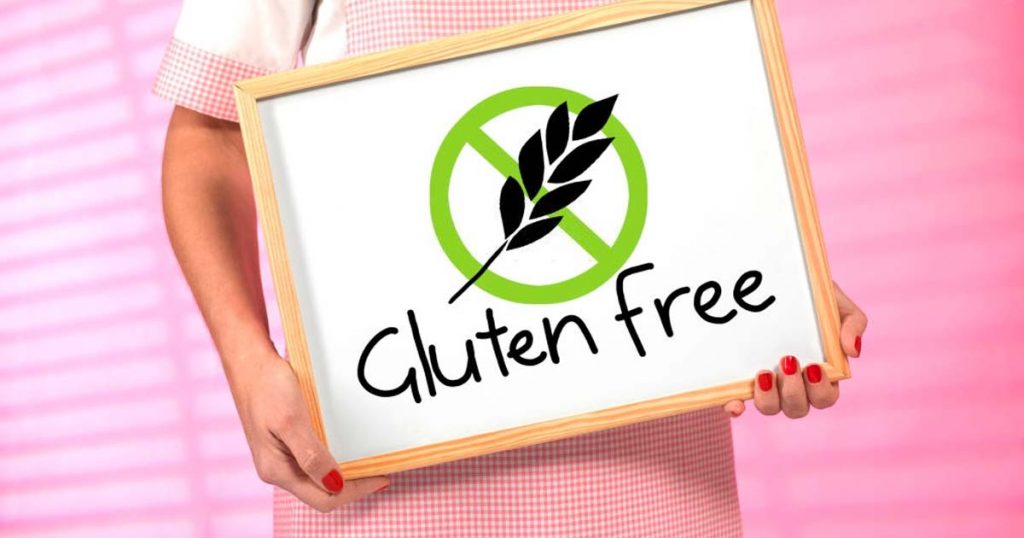When beginning a gluten-free diet, the learning curve is steep. Many people have false expectations about how fast a gluten-free diet will correct all of the years of abuse. After a couple of days without gluten, they expect not to feel tired or ill. They expect to have loads of energy and feel great. However, during those initial days, the immune system is still overreacting and the body is fighting to heal. The result is that gluten-free diets can make a person feel worse, not better.
Hidden Gluten on Food Labels
When a person follows a gluten-free diet for a while yet still feels sick, the first thing to address is the possibility of hidden gluten. Quite often someone starting a gluten-free diet will be eating things not safe. Reading food labels can be difficult because the FDA only requires manufacturers to list the top eight major allergens on the label.
A person with celiac disease needs to avoid wheat, barley, and rye. While wheat is one of the eight major allergens and listed on the label, barley and rye are not. Rye is never used in generic terms on food labels, so those with gluten intolerance need to focus on barley. There are several ways to look out for hidden gluten:
- stick to products that have gluten-free clearly stated on the label
- contact the manufacturer listed on the label by phone, email, or letter
- check a company’s website for gluten-free information
- email a company for a list of their gluten-free foods
- stick to brands who have said they will always declare gluten on the label
Go Gluten Free Dairy Free
In a study performed on 82 patients with active celiac disease, untreated and after a gluten challenge, Volta U. and others found 36% to 48% also reacted to the casein found in dairy foods. According to the Celiac Disease Foundation, this reaction occurs because damaged villi in the small intestine cannot break down lactose molecules for digestion. When a person with gluten intolerance stops eating gluten, the villi grow back.
For most celiacs, healing the villi takes six months to one year, but for some, it takes up to two years. Until healed, dairy foods need to be avoided. Since the tips of the villi produce the enzymes necessary to break down lactose, even a single gluten exposure can cause a reaction to dairy. If a celiac has a true dairy allergy, he is reacting to casein protein rather than lactose. For these individuals, dairy must be avoided even after the villi have healed.
Gluten Intolerance and Opioid Addiction
Gluten and dairy products contain peptide chemicals called opioids. These opioids have an opiate-like effect. Opioids enhance the effect of neurotransmitters in the brain known as endorphins. They create feelings of euphoria. When a person eats only gluten-free foods, he no longer experiences this effect. In the book Dangerous Grains, Dr. James Braly, one of the authors, wrote that opioids make the gluten and casein protein in dairy products addicting.
When a person is addicted to wheat or dairy, eliminating the offending foods can cause withdrawal symptoms such as exhaustion, headaches, depression, weakness, nausea, irritability, anger, and brain fog. In this condition, a person with celiac disease can feel worse on a gluten-free diet and begin to believe it is not working.
A Gluten-Free Diet Takes Time to Heal
It takes more than a week or two to heal from years of damage. Typically, it takes a minimum of six months. During that time, a celiac may experience problems finding and getting rid of hidden gluten, especially if family members have not adopted a gluten-free diet themselves. There are many sources of cross-contamination other than hidden gluten that can keep a celiac ill. For further information, see How to Avoid Cross-Contamination on a Gluten-Free Diet.
Gluten intolerance also causes symptoms of dairy sensitivity whenever the tips of the intestinal villi are damaged. These symptoms are exactly the same as for celiac disease. A celiac may experience adverse reactions and addiction withdrawal from getting rid of wheat. These withdrawal symptoms can make a person feel miserable, to the point of thinking the gluten-free diet is not working. Time is needed to heal, but initially, a person may feel worse before they feel better.
For another reason, see Most Celiac Gastrointestinal Symptoms Due to Fat Malabsorption
References:
- Scandinavian Journal of Gastroenterology, Antibodies to dietary antigens in coeliac disease, Volta U, et al, 21:8, 935-940, 1986
- The Celiac Disease Foundation, celiac.com, “How is lactose intolerance related to celiac disease?” (accessed April 26, 2010)
- Braly, James, M.D., and Hoggan, Ron, Dangerous Grains, Avery Trade, August 2002
- Wangen, Stephen, M.D., Healthier Without Wheat, Innate Health Publishing, 2009
